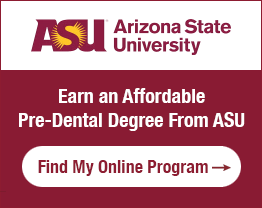The New York Office of the Professions licensed 487 dental hygienists in 2013, an increase from 446 in 2012. As of 2013, there were 11,007 dental hygienists practicing in New York.
The counties employing the most dental hygienists during this period were:
- Suffolk County: 972
- Erie County: 861
- Nassau County: 844
- Queens County: 596
- Kings County: 577
Featured Programs:
- Online
- Online
If you want to become a licensed dental hygienist in New York, you must complete the following steps:
Step 1. Complete an Accredited or Qualifying Dental Hygiene Program
A dental hygienist license in New York always begins with the completion of a dental hygiene program that has either been accredited by the Commission on Dental Accreditation (CODA) through the American Dental Association or has been qualified as a New York State registered licensure program.
The minimum degree requirement to become a licensed dental hygienist is an associate degree, which may be structured as an Associate in Arts (A.A), Associate in Science (A.S.), or an Associate in Applied Science (A.A.S.). However, CODA-accredited dental hygiene programs may also be designed as bachelor degree (B.S.) programs.
Although the general curriculum in dental hygiene and the dental hygiene sciences in similar, bachelor degree programs are often more comprehensive and often contain additional coursework in such areas as office administration and business management.
Both associate and bachelor’s degree programs in dental hygiene usually result in a clinical externship, which provides students with the opportunity to apply the knowledge they gained during their program in a real-world setting.
There are currently 11 CODA-accredited programs offered through dental hygiene schools in New York, as well as online programs.
Step 2. Pass the National Board Dental Hygiene Examination
Upon the successful completion of a CODA-accredited dental hygiene, you must take and pass the National Board Dental Hygiene Examination (NBDHE) through the Joint Commission on National Dental Examinations.
The NBDHE is a written examination that is designed to assess your knowledge of all biomedical and dental hygiene sciences. It also assesses your ability to solve problems through case-based assessments. You must contact the Joint Commission at 312-440-2678 or at www.ada.org to register to take the NBDHE.
Upon registering for the examination, you must schedule your examination through one of the nation’s numerous Pearson VUE testing centers. In New York, you may take the NBDHE at one of the Pearson VUE testing centers located in New York City, Brooklyn, White Plains, Staten Island, and Lake Success.
Step 3. Pass a Clinical (Practical) Examination
In addition to taking and passing the National Board Dental Hygiene Examination, you must take and pass the North East Regional Board (NERB) of Dental Examiners clinical dental hygiene examination.
If you fail any component of the clinical examination more than once, you must complete additional education requirements at a CODA-accredited dental hygiene school before you can be re-admitted to the clinical examination. Specifically, after two failures in the dental hygiene comprehensive component of the clinical examination, you must complete at least 20 clock hours of instruction in each subject failed. After two failures in the clinical component of the examination, you must complete at least 40 clock hours of instruction.
You can contact NERB at 301-563-3300 to register to take the examination.
Step 4. Complete Additional Educational Requirements
In addition to meeting the education requirement for licensure, you must also complete coursework or training in the identification and reporting of child abuse. You can find approved providers for this training here.
You must also complete approved coursework or training in the practice of infection control and barrier precautions, including engineering and work practice controls to prevent the transmission of HIV and the hepatitis B virus. You can find approved providers for this training here.
Step 5. Apply for Licensure as a Dental Hygienist
To apply for licensure as a dental hygienist in New York, you must complete the following:
- Form 1: Application for Licensure
- Form 2: Certification of Professional Education
- Complete Section I and send it to your school
- The registrar will complete Section II and return it directly to the Office of the Professions
The fee for licensure and first registration is $128.
Step 6. Apply for Certification in Dental Hygiene Anesthesia
You must obtain certification to administer and/or monitor nitrous oxide analgesia and local infiltration anesthesia as a licensed dental hygienist.
The fee for certification in dental hygiene anesthesia is $25 (made payable to the New York State Education Department). You must either complete an educational program that is registered by the New York State Education Department and includes at least 30 hours of didactic coursework and at least 15 hours of clinical training or complete a program that is acceptable to the New York State Education Department. You can search for programs here.
Step 7. Maintain Your Dental Hygienist License
Dental hygienists in New York must complete at least 24 contact hours of continuing education during each three-year registration period. You are not, however, required to complete continuing education during your first three-year registration period.
An hour of continuing education is one contact hour, which is at least 50 minutes in duration.
You must complete a State-approved infection control course every 4 years. Other appropriate subjects in dental hygiene may include:
- Basic and clinical dental sciences
- Behavioral science
- Pharmacology of new and developing drugs
- Infection control
- Public health issues
- Drug interactions
- Legal or regulatory issues
- Risk management
- Patient counseling
You must complete at least two-thirds of all continuing education hours via live courses.









